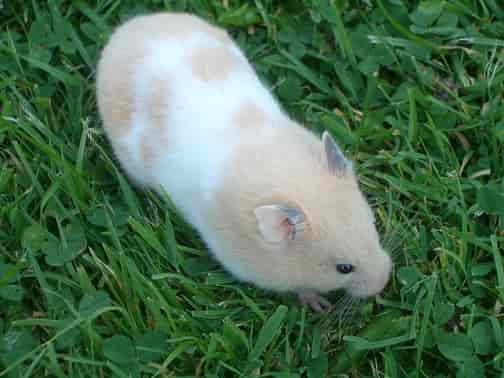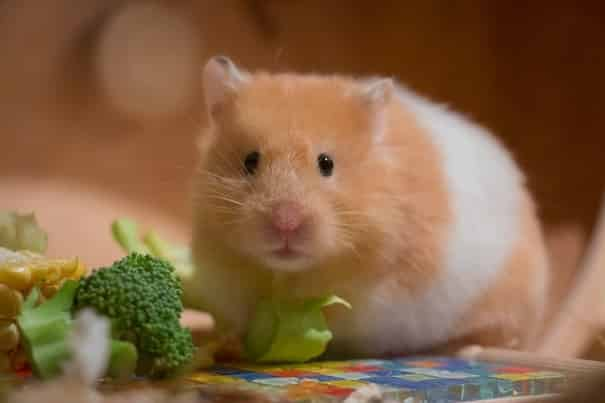Hamster as a pet
If you have been wondering what it would be like to take
care of a hamster, then you have come to the right place. Keeping hamsters as
pets is easy, but it is a commitment of your time and resources.
For starters, hamsters take up very little space. They
require no more room than the amount of space required by a large fish tank.
Because of their tiny footprint, you can successfully keep hamsters as pets in
a tiny apartment or small house just as easily as you can in a large spacious
home.
Although hamsters are small, in order for you to own
hamsters, you will need to make a commitment of time and other resources.
Keeping hamsters as pets can require as much time and dedication as owning a
dog. Daily, you need to feed your pet and make sure it has clean water.
Several times a week, you need to clean out their toilets. Each day, you must
provide about an hour of playtime and interaction for you and your hamster. You
also must plan on thoroughly cleaning out their cages about once a week.
Hamster facts
Financially, you may spend as much money to care for a
hamster as you would spend on any other pet. While the initial expense of the
hamster is minimal, there is a not an insignificant investment on its home and
for supplies. Your hamster will eat only about a teaspoon of food a day.
You will need to keep a fresh supply of bedding material on hand. The largest
potential expense, however, may come from the veterinarian. Your hamster can
get sick like any other pet, and you must be prepared
If you want a small pet that you can cuddle, then you must
choose your hamster species carefully. The dwarf hamster species are not tame, are exceptionally fast, and can fit through and into
tiny spaces. The Roborovski been
bred
Although hamsters hoard food, you cannot expect to leave
your pets alone in your home for over one or two days. These animals are
social creatures and will become distressed if they do not hear your voice regularly.
Another thing to keep in mind is that hamsters cannot
cool themselves once the temperature gets about 85°F (30°C). For this reason must keep them and their home below this temperature at all times.
One final note about keeping hamsters as pets is that these
animals are nocturnal or crepuscular. You must plan your interactions with
them either very early in the morning or late in the evening. You must
also keep them in the house in a location where they will not disturb your
sleep during the night.
Hamster pet
If a hamster dies a natural death in old age, then it
typically can live between 1 ½ and 3 years. Unfortunately, not every family's
pet lives that long because there is a multitude of important factors that can
cause premature death in a hamster.
For a pet hamster, probably the number one cause of early
death is trauma. How long a hamster lives in a family's home depends to a great
extent on how cautiously the hamster is handled what precautions are taken
Because hamsters have notoriously are sufficiently tamed
When handling your pet, it is best to be sitting firmly on
the ground. This is a rule that should especially be enforced be dropped
Hamster care
How long do hamsters live when they escape from their cages?
This depends on the measures that their owners take
after the escape occurs.
To begin with, if there is an escaped hamster on the loose,
then everyone in the house needs to pay attention to where they are walking.
Sadly, many hamsters have died when they were stepped
Next, all the electrical cords must be moved
It is best if the escapee can be confined be kept be kept
Next, family members must exercise great caution when using
furniture. Hamsters like to hide in small enclosed spaces. A shifted couch
could crush a hamster that is hiding between it and the wall. Similarly, the
household members should check underneath each cushion and in the crevices of
the furniture before they sit down. A small space can lead to death by
suffocation when a person's body weight is added
Finally, all laundry items must be shaken
So, as you can see, how long a hamster lives can depend on how adeptly hamster owners handle their pets and what precautions
they put in place if their pet hamster escapes.
For the last several (human) generations, the Syrian hamster
has commonly been kept are defined provides an overview of
The Syrian hamster is from the species Mesocricetus aurates.
This hamster has gone by the names of black bear hamster, teddy bear hamster,
panda hamster, and golden hamster. Yet, all of These hamsters have been bred
Dwarf hamster
The first species of dwarf hamster that has been gaining in
popularity is the Chinese dwarf hamster - Cricetulus parabens griseum. Of all
the hamsters this one looks most like a rat. It has a long nose, a long narrow
body, and a noticeable prehensile tail. Of all the hamsters kept as pets, this
one is adept at climbing. If you choose to Hidey
The other three dwarf hamsters kept as pets are all members
of the genus Phodopus, a word that means "padded foot." The three
species in this genus are Phodopus sungorus Campbelli Roborovskii
Phodopus sungorus then Campbelli in
order sungorus dark,
Phodopus Campbelli has a profile that is often described sungorus
The last dwarf hamster in the genus Phodopus is Phodopus
Roborovskii, and it is the tiniest of all hamsters - measuring in at just
around 2 inches (5 cm). This little critter is quite a sociable animal,
preferring to live in groups. If you've ever seen pictures of hamsters stacked
on top of one another like sardines, then you have seen a picture of Phodopus
Roborovskii. This hamster is much speedier than any of the others, and, this animal is meant watched, in
Black
Black bears and hamsters have little in common. The black
bear is large; the hamster is small. Black bears don't usually Give birth to one or two babies; hamsters give birth to a
litter of 8 or more. Black bears live in deciduous forests; hamsters inhabit
deserts.
How on earth, then,
Well, the black bear hamster is a non-scientific name given
to a Syrian hamster whose pelage (a word meaning coat) is colored that
In fact, however, the DNA of this hamster is exactly the DNA
of the Syrian hamster Mesocricetus aurates. The difference is that this animal,
however, does not have the original golden color of the wild hamster, but has a
color mutation, designated by the genotype (a word that means the gene that
determines something - in this case coat color) aa totally which means that
Types of hamster
The pelage is one of 11 basic color mutations that occur
as natural variations of the wild agouti-colored Mesocricetus auratus Due to chocolate colored aa bb aabb is officially known ( Sable) aabb quite be called blck
Another thing to keep in mind is that we so far have been
talking only about the color of the animal's coat. We have not said anything
Rex coated hamsters were first recorded in the 1970's type of is
brushed
In summary, then,
Black Rex
Black satin
Black long-haired
Chocolate (Black)
Chocolate (Black) Rex
Chocolate (Black) satin
Chocolate (Black) longhaired
There are two important points to keep in mind, though, when
choosing a pet hamster.
1) Coat color and type do not determine personality. You
need to assess the temperament of the hamster based on its behavior, not its
color.
2) Regardless of the coat color or coat type, the animal is
still a Syrian hamster. Therefore, it should care for just the same as any
other hamster belonging to the species Mesocricetus auratus
It is important that you are properly equipped is Hamster
How to Bring Him/Her Home
What Kind of House Should They Live In
What Type of Bedding to Buy for the Hamster
What Food Can/Should a Hamster Consume
What Exercise Equipment is Best for the Hamster
Check, and double-check to make sure you have all the
stuff your hamster will need to be happy.. Hamsters are fragile
little things, so ensure that you have picked bedding, cages, food, playthings , and environments that will optimize their life and longevity.
History of the Teddy Bear.
The teddy bear hamster was first spoken of scientifically in
1839, was not bred 1940's hoardes been
documented grain
Since their domestication is the 1940's due to
Teddy Bear Hamsters most notably have Bear's have
Yet the Syrian Hamster since its domestication has also
gained widespread popularity as a pet. Mostly because of their cuteness,
curiousness, and playful antics. Hamsters will continue to be one of the most
popular pets to own in the world and are a great asset to humanity's health and
happiness.
Hamster name
All over the world, there are people who would like to have
pets of their own. It may not be a very common choice, unlike
choosing a dog or a cat. Some would want to have a more exotic kind.
For many households, hamsters are acute and sweet pet are an
aspiring pet owner who has a hamster in mind for a pet, you have to very
particular in terms of providing actually are also typically known
A lot of hamster owners would like to come up with a unique
or highly fashionable name that has a nice ring to it. These names should be
easily familiarized by your pet hamster which When it comes to you







